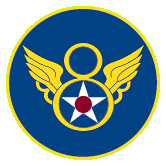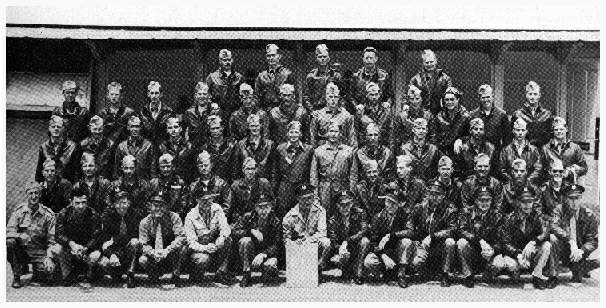|
 Lt.Walter F. Perra
Lt.Walter F. Perra
An Unknown American Fighter Pilot In France
November 11, 1944 � � � "On June 15, 1944 an American pilot flying a P-38 Lightning was shot down near Dreux, France at the little village of Les Corvees. Immediately after the crash the Germans stripped his body of all papers, rings, dog tags and even took his boots and flight jacket. The Germans refused to bury the pilot and forbid the French from doing so for four days. Finally Monsieur Blondeau gained permission to bury him, not in a cemetary, but in the field where he fell and near his crashed plane. The Germans forbid the use of a coffin but secretly the French built a box and buried him. These people knew nothing of the pilot, so all they could put on his grave was a cross at the head bearing the date of his death. Since that date these kindly peasants have cared for his grave and placed flowers there frequently. He rests at the edge of a field near a small wooden thicket and by a dim farm road. � � � "On November 11, 1944, while about 15 men of the Hq. and Hq. Squadron, 100th. Service Group were taking part in an Armistice Day celebration with the French in the village of Vernouillet, the French people told of this lone pilot's grave and invited the Americans to take part in a service at his grave that afternoon. � � � "That afternoon about 3:30 an impressive procession of French civilians and American soldiers walked about a mile through muddy fields to do homage at the grave of an unknown American pilot. Six elderly French veterans of World War 1 led the procession. They were striking in their old, faded uniforms with shining metal helmets, and bearing their regimental colors, the French tri-color and an American flag. Following these colorful veterans marched 11 American soldiers bearing rifles and led by Captain Louis R. Lammie, adjutant; behind these trailed 75 or 100 French civilians, old and young alike, all eager to pay homage to a fallen ally. � � � "The grave was already decorated with wild flowers when the procession arrived, but when the simple service ended the grave was completely hidden by floral offerings of these loveable people. In fitting military style, taps were blown and three volleys fired over the pilot's grave. It would have been impossible for any American to have attended this service without being impressed and stirred by the sincerity and devotion of these friendly people. � � � "According to reports of eye-witnesses, the pilot and plane crashed in the following manner: he was flying quite low when German anti-aircraft fire disabled one of his engines. His plane wheeled into a spinning dive and appearantly he tried to right it with the one good motor but was unable to do so. Some say he was about to crash in the village of Dreux and he may have stayed with his plane to guide into a field nearby. In either case, at the last moment he bailed out but was already too near the ground and was killed instantly about 100 yeards from where his plane crashed. One engine and a part of one tail of his plane is all that was burned.
� � � "At the time the writer viewed the wreckage all instruments and identification marks on the plane were gone - perhaps taken by the Germans or souvenir hunters. However, Monsieur Blondeau, the mayor of the village, preserved the number of the plane and description as floows: plane number, 02104067, the plane was named 'Little Bug' and four swastikas were painted on the side." |
Unless otherwise noted, all content � copyright The Art of Syd Edwards 1999. All rights reserved and reproduction is prohibited.

